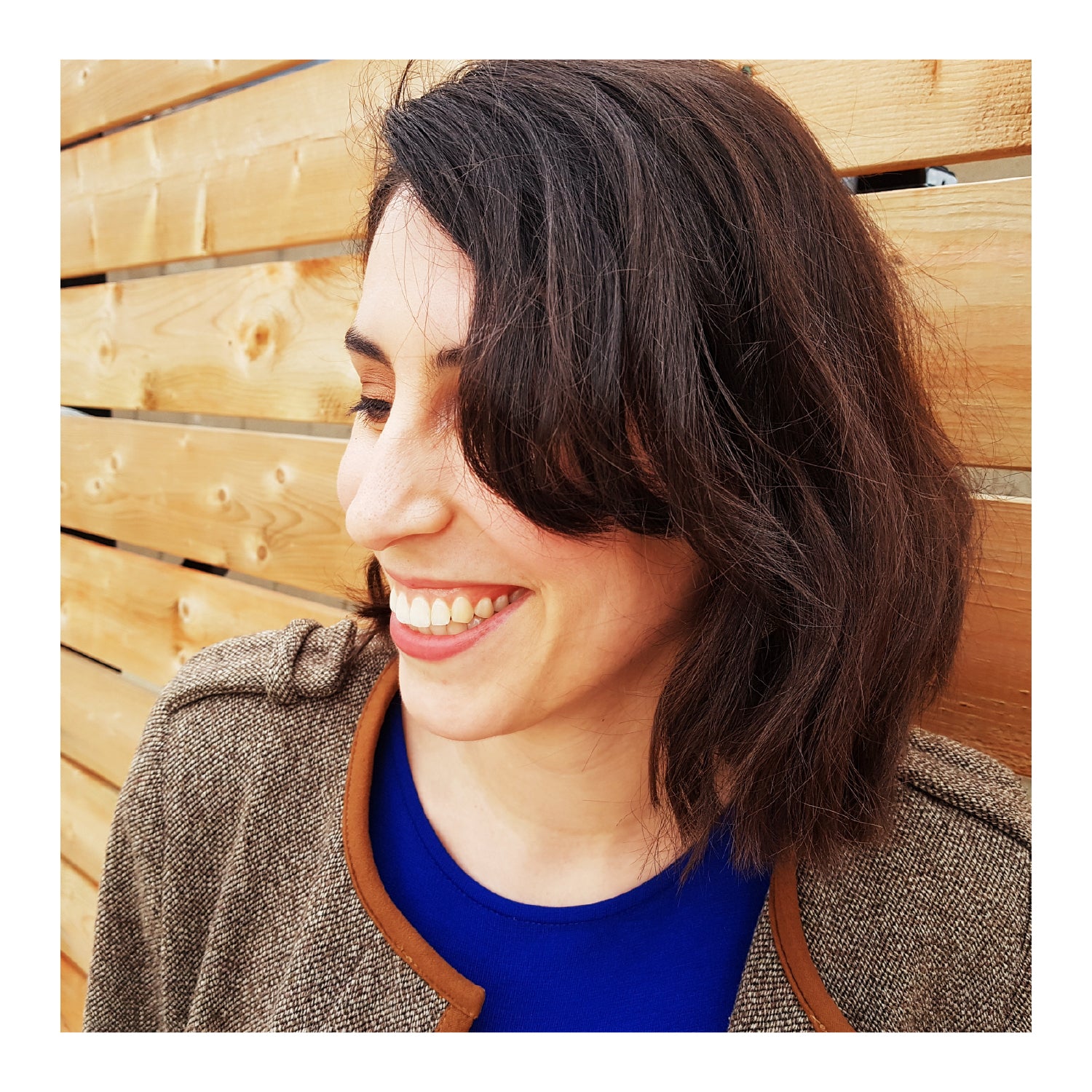Have you heard a fado before? Have you been pulled into its wrenching woes and hopeful bellows? Have you ridden its lamenting verses and crested its powerful peak?
The Inspiration Behind Fado Road
It's hard not to be moved when listening to fado, a melancholic genre of Portuguese music that carries its listeners along a sombre road before bursting into cries of longing and hope. My grandfather loved to listen to fados. I can recall spending the holidays at my grandparents' home and watching Mariza dos Reis Nunes on a dark stage, her platinum white hair and ball gown drawing my eyes in and her deep sombre sound beckoning my curiosity.
While I certainly wouldn't attempt to belt a ballad, I felt my most recent quilt design embodied the music. Fado Road began as a row quilt, but took on a modern twist when I began to play with scale. It is my visual interpretation of a fado.
Set your eyes on the left side of the quilt photo below. You can follow a pattern toward the right until your vision is halted by a disruption in the design. These visual interruptions are blocks that have been made larger than their neighbouring companions. They are visual swells in the design like swells of sound in a fado.
Along the fado road, everything is predictable until it isn't, and how beautiful a journey.
I incorporated five scaled-up blocks in the design, can you spot them all?

Listen to a classic fado song called Fado Portuguese by another popular singer, Amália Rodrigues, and browse the lyrics here for the full experience. One of the verses is translated as such:
Fado Road Quilt Pattern Release
The pattern will be available in both PDF and paper formats on December 14, 2023! Subscribers to The Fleet - the Ships & Violins monthly newsletter - get exclusive perks.
Join the fleet before the launch to get access!




A Look Inside the Fado Road Quilt Pattern
While you may love the look of Fado Road, you may also be a little nervous about crafting it yourself. I can assure you that you CAN make this quilt! In fact, I'm here to show you that the techniques used to make this quilt are probably very familiar to you.
Writing the Fado Road pattern was a labour of love, for sure. It was organized in a way that is both efficient and satisfying.
To sum it up: you'll start by cutting your fabric strips, assembling the strips into strip sets, and assembling the strip sets into blocks.
The quilt blocks - including the classic nine-patch - make up the bulk of the quilt top. The strips sets are an efficient way to piece the blocks and help to curb sewing with tiny pieces. Below are three examples of the blocks you'll be making - easy, right?



The foundation paper piecing (FPP) is beginner friendly. No angles, only squares and rectangles. These FPP elements in the pattern are mainly required to make: 1) the scaled-up blocks to avoid piecing with obscure measurements, and 2) various strip sets to avoid piecing with tiny pieces. Below is an example of the FPP templates you'll be making.

Now let's take a closer look at how I've organized the instructions for assembling the quilt top.
The quilt top comes together in sections - a satisfying way to see the quilt come together bit by bit. Each section includes detailed instructions and illustrations.
Below is an example of what you'll see in the pattern.

Each section includes:
- An illustration of the completed section.
- The number of blocks and FPP fillers required to complete it.
- Instructions to make simple "alterations" to some blocks. Above you can see that you will have to rip some strip sets from Block B before beginning to assemble the section.
- Written and illustrated instructions to assemble the section.
- The unfinished measurements of the section.
Whether you prefer written or illustrated instructions, this pattern has got you covered!
Additional Resources for Fado Road Quilt
To ensure you feel equip to take on this pattern, I've put together some additional resources that will assist you on your journey. The resources are free to download and include:
- A swatch card to help you associate the colours in the pattern with your own selections.

- A quantity list for templates. This will help you confirm that you've printed or photocopied everything you need.
- Cut-out windows to help you audition fabrics for the smaller piecing in the quilt (if you're not using solids or basics).

- Larger diagrams showing how to assemble the foundation paper pieced sections.
- Labels to help you stay organized.
Use some or all of these tools to help you make your own Fado Road quilt.
Fado Road Colouring Page on Quilt Ink
Fado Road is an intricate looking pattern and a traditional colouring page would be overwhelming to complete. But, if you're a planner like me, it's helpful to have an idea of what your quilt will look like before investing the project.
Your best bet is to use the Fado Road digital colouring page on QuiltInk (be sure to 'merge' the colours befor beginning). Below is a mockup in a selection of Ruby + Bee Solids for Windham Fabrics. You can check out my blog on how to use Quilt Ink here.

Frequently Asked Questions
What techniques are used to make this quilt?
The quilt is made using traditional piecing, strip piecing, and simple foundation paper piecing.
I've never foundation paper pieced, can I still make this quilt?
Yes! The foundation paper pieced templates in this quilt are VERY simple. They are only squares and rectangles – no angled pieces. Refer to the photo tutorial on how to foundation paper piece to help you learn the technique.
Is there tiny piecing?
No, the strip piecing eliminates nearly all the tiny piecing.
Are there a lot of seams to match?
When making the strip pieced blocks, quilters will be able to nest seams for easy matching. There will be seams to match using glue basting or pins when assembling sections.
Will the blocks be trimmed before assembling?
Quilters will be able to trim the top and bottom of the strip-pieced blocks to ensure that they are accurately sized before assembly.
How long will it take to complete making the quilt top?
This will depend on how often you work on it. It’s certainly not a weekend quilt! I was able to complete it within two months – working on and off during that period.
How difficult is it to make the Fado Road quilt?
The pattern is for adventurous beginners or intermediate quilters. The quilt is not difficult to piece, but there is a lot of piecing to do. Assembling is also relatively easy, however some sections may take longer to piece than others.
If you are an organized quilter and have the time to put it together, you should be able to tackle this pattern without a hitch.
Will there be a Fado Road sew along?
Yes, a sew along will be announced shortly. It will take place in the new year.
What size is the quilt?
The quilt measures 64.5” x 82.5” – a large throw.
Can I modify the pattern for different sizes?
The pattern comes in a single size, 64.5” x 82.5”. Quilters can use the foundation paper pieced sections to make small projects.
What are the yardage requirements?
The pattern requires six colours. The yardage is listed below:
- Fabric A: 3¼ yards
- Fabric B: 2 yards
- Fabric C: 1¾ yards
- Fabric D: 1½ yards
- Fabric E: ¾ yards
- Fabric F: 1½ yards
- Binding: ¾ yard
- Backing 4½ yards
What fabrics did you use for the cover quilt?
The cover quilt features Northcott's Color Works Solids in Denim (A), Desert Rose (B), Creme Brule (C), Sea Glass (D), Matcha (E), and Ginger (F). The binding is Color Works in Ginger. The backing is Birds in Pistachio from the Seasons collection by Figo Fabrics.
What fabrics work best for the pattern?
I recommend solids, basics, or fabrics with small motifs. Batiks would work as well. Download the additional resources for the pattern to access “Cut-Out Windows” that will help you to audition how your fabric will look once pieced into the quilt top. There are some opportunities for fussy cutting too!
Can I use patterned fabrics?
Yes, though I recommend fabrics with smaller motifs.
Can I make a scrappy version?
I would hesitate to make it scrappy and lose the subtle design elements. If you can find fabrics that read as the same colour, that may work.
What other patterns are in the series?
Fado Road is the second pattern in the Ships & Violins Woven Patchwork series. The first quilt pattern is a traditional row quilt, Alentejana (ATJ).

